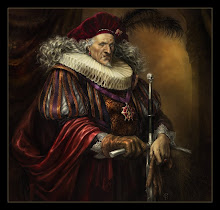Explain how [the following poems] represent one or more of the ways that the sonnet evolved.
The Canzoniere (translation irrelevant)
Voi ch'ascoltate in rime sparse il suono A
di quei sospiri ond'io nudriva 'l core B
in sul mio primo giovenile errore B
quand'era in parte altr'uom da quel ch'i' sono, A
del vario stile in ch'io piango et ragiono A
fra le vane speranze e 'l van dolore, B
ove sia chi per prova intenda amore, B
spero trovar pietà, nonché perdono. A
Ma ben veggio or sí come al popol tutto A
favola fui gran tempo, onde sovente B
di me mesdesmo meco mi vergogno; A
et del mio vaneggiar vergogna è 'l frutto, A
e 'l pentersi, e 'l conoscer chiaramente B
che quanto piace al mondo è breve sogno. A
Romeo and Juliet
Let me not to the marriage of true minds A
Admit impediments, love is not love B
Which alters when it alteration finds, A
Or bends with the remover to remove. B
O no, it is an ever fixéd mark C
That looks on tempests and is never shaken D
It is the star to every wand'ring bark, C
Whose worth's unknown although his height be taken. D
Love's not time's fool, though rosy lips and cheeks E
Within his bending sickle's compass come, F
Love alters not with his brief hours and weeks, E
But bears it out even to the edge of doom: F
If this be error and upon me proved, G
I never writ, nor no man ever loved. G
The evolution of the sonnet is nothing directly biological, nor logical in most senses for that matter, but rather it is predominantly fortuitous.
Thomas Wyatt--an ancestor of mine--is said to have given birth to the English sonnet, which was forged, of course, from his amorous feelings for a woman he couldn't have (the English king's queen). But he wasn't the vanguard of sonnets in their entirety. It is a renowned Italian 'sonneteer' by the name of Francesco Petrarch who claims that title.
The Petrarchan Sonnet is perhaps the most recognized form of sonnet beside the Shakespearean Sonnet form. The first poem displayed, taken from The Canzoniere, was written by Petrarch and contains the distinguishable strict rhyme scheme of ABBA, which is Petrachan Sonnet form at its finest.
The Shakespearean Sonnet, the most famed of all English sonnet forms, was written most commonly by William Shakespeare--although other poets and playwrites conjured up similar sonnets alongside or before Shakespeare's--in the 16th century, and consists of the rhyme scheme ABAB CDCD EFEF GG. The final two lines of Shakespeare's sonnets served as his signature, for they always contained identical rhyme schemes and were set apart from the main body of the poem in some fashion.
The divergence in the two most acclaimed sonnet form types is distinct, but both are incredibly rife with romanticism. Seldom do sonnets not pertain to love or death, and those that do not are often frowned upon.
skip to main |
skip to sidebar

deviantART.com


deviantART.com
Widely Discredited Ukulele
Followers
Blog Archive
About Me

- The Mad Archivist
- The fantastic voyage through life is experienced but once. In most cases, if not all, each life bears a single personality; a demeanor that grows within and is strengthened over time. But mine is not such a case. I am a thespian, and my lifelong vocation as an archivist is to capture every personality possible. For if we are allotted but a single life, why not pursue all the avenues it proffers.